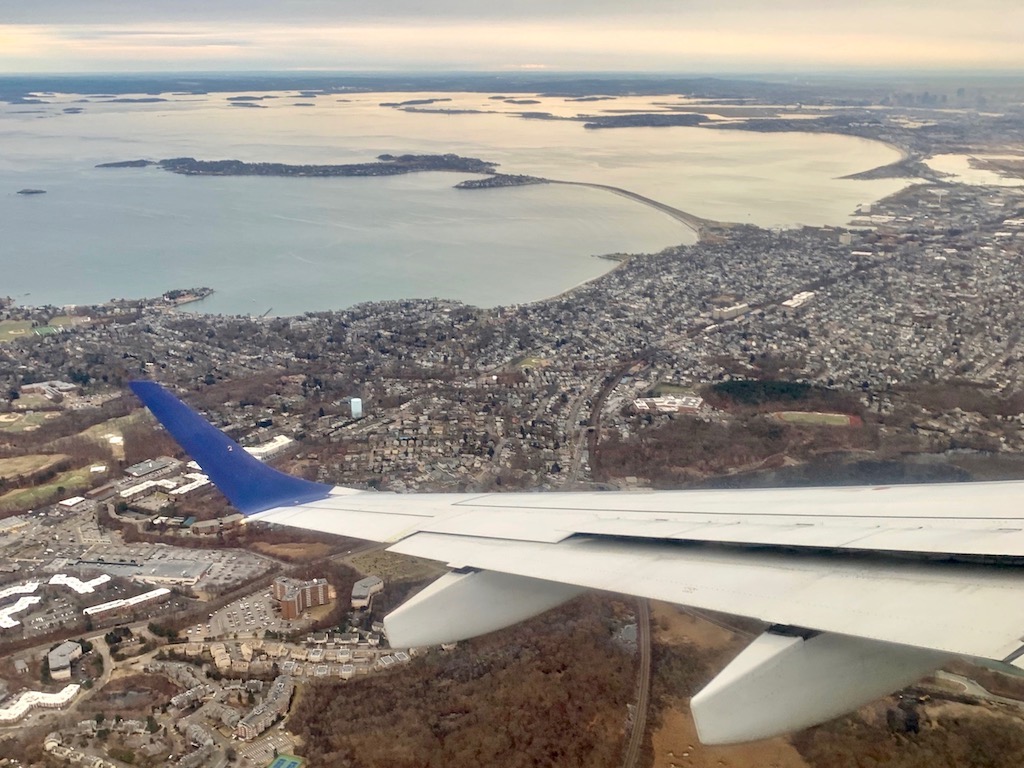I recently spoke with Christina Beckmann, lead for climate action for the Adventure Travel Trade Association (ATTA) and co-founder of start-up Tomorrow’s Air, which is uniting travelers in support of carbon removal.
What is Carbon Removal?
I first learned about Tomorrow’s Air in March, when I listed in on a webinar that Christina led, “Framing Climate Crisis Stories & Solutions in Travel,” which co-hosted by ATTA and Impact Travel Alliance. That was also the first time I ever heard of carbon removal. It works like this:
-
- Air is pulled into a carbon removal collector with a fan.
- Carbon dioxide (CO2) is captured on the surface of a filter inside the collectors. Once the filter is full, the collector is closed.
- The CO2 is mixed with water and pumped deep underground.
- Through natural mineralization, the CO2 reacts with basalt rock and turns into rock.
Incubated by ATTA, Tomorrow’s Air is the first and only traveler collective that is working to invest in scaling the implementation of this critical technology. Learn more below about how Tomorrow’s Air came to be, and how you can get involved in cleaning up our atmosphere for future generations.

Christina in Antarctica in 2018
Interview with Christina Beckmann of Tomorrow’s Air
Do you have a tourism background?
I actually came from management consulting. I had an epiphany in the Grand Canyon, and I ended up leaving consulting to promote sustainable tourism as a means of economic development.
By 2030 as much as 6 gigatonnes of carbon emissions need to be pulled from the atmosphere and stored each year. (Tomorrow’s Air)
How did Tomorrow’s Air get started?
It was sparked by a 2018 trip to Antarctica organized by ATTA. It made me realize that none of the good we do (in sustainable tourism) matters if we don’t get a handle on the climate problem. I see the world in a completely different way now. I met my co-founder on that trip (Australian Nim de Swardt). We developed the concept during 2019 but then reimagined it during “COVID.”
The realization that even if all emissions halted tomorrow—even if this impossible thing occurred—that we still have billions of tons of excess carbon dioxide in the atmosphere heating the planet for generations to come was mind-blowing. (Tomorrow’s Air)
How do you define the climate problem?
CO2 is long lived, and air is finite. We’re already too late—we passed the point of no return about 30 years ago. Nature-based solutions haven’t worked, and the more we miss our targets, the more we’ll need to make up the difference.
What is Tomorrow’s Air doing differently?
Tomorrow’s Air goes beyond carbon neutral. We support removing CO2 from the air for permanent storage. And we engage travelers to be part of the movement, and chip in to scale the use of this technology in cleaning up the air.
According to a recent article in The Washington Post, the concentration of atmospheric CO2 was measured at more than 420 parts per million, which means we’re about halfway to doubling pre-industrial CO2 levels.
But I thought carbon neutral was a good thing?
Carbon neutral just leads to cheap offset and doesn’t solve the problem.
Why are you looking to the travel industry to lead the way?
Travel is everywhere and it’s visible, and it can be a massive force for good. However, if we’re riding on top of an infrastructure that’s not sustainable, we’re not doing any good. Sustainability needs to be embedded in the foundation.
Travelers like us are are explorers at heart. We are curious, early adopters, and influential among our peers. As individuals we wield influence; as a collective we possess massive potential to shape the future. (Tomorrow’s Air)

illustration of a direct air capture machine (Tomorrow’s Air)
What’s the response been from travelers so far?
I hear, “I get it. That’s something I can do.” They like that they can do something meaningful without having to calculate emissions. It’s tangible.
Given that you’re a start up, what’s your focus now?
We’re building awareness—we’re using the “Oprah’s Book Club” method of marketing. We’re building a network through content creators to allow inspiration and education to happen organically. Right now it’s mostly individuals signing up—about 80%. So we want to reach more companies, and encourage them to provide Tomorrow’s Air subscriptions for their employees.
We’re also working with artists and doing storytelling around their work. Art gives us a creative visual language, and allows us to hit [them] in their hearts and minds.
By 2030 as much as 6 gigatonnes of carbon emissions need to be pulled from the atmosphere and stored each year. (Tomorrow’s Air)
What’s next for Tomorrow’s Air?
300 billion tons of carbon comes from air travel. We just want to clean it all up. And eventually we want Tomorrow’s Air working with every industry.
How Travelers Can Support Tomorrow’s Air
Join me and a cohort of like-minded sustainable travelers, and:
- Sign the Clean Up Pact.
- Subscribe to Tomorrow’s Air. For as little as $10 per month, you can clean up and permanently store 85kg (187 lbs.) of carbon dioxide annually, and inspire others to follow your lead. You can also gift a Tomorrow’s Air subscription to other travelers in your life.

Tips for Travelers to Help Combat Climate Change
If you’re looking for more ways to reduce your carbon footprint when traveling, here a few things you can do:
- Pay attention when booking your flight:
- Choose direct flights, instead of flights with stops or layovers.
- If you use Skyscanner, you can search by lower-emission flights.
- Take newer planes that are as full as possible.
- Calculate your flight’s emissions and support responsible carbon offset programs. You can usually purchase offsets directly through the airline, or you can go through Sustainable Travel International.
- Pack only what you need, since the less a plane weighs, the less fuel it burns.
- Take public transportation whenever possible to and from the airport, or use cab and car shares like BlaBlaCar to get around your destination.
- Choose walking tours instead of bus tours.
- Support local tour companies and guides. Solo and small-group tours have a lesser impact on the destination than large groups do.
- Eat at local restaurants, which are more likely to source food from nearby.
- Whenever possible, travel slowly. Stay in one destination for the entirety of your trip and savor it!
Additional Resources for Carbon Removal and Storage`
If you want to learn more about carbon removal and storage, the g0-to is Dr. Julio Friedmann, a Senior Research Scholar at the Center on Global Energy Policy at Columbia University SIPA. His Twitter handle is, appropriately, @CarbonWrangler.





3 comments
Travel slow! Yes! So much rushing around. These are all great tips on how we can reduce our foot print as travelers. Great to see initiatives like this too helping to undo some of the damage. Thanks for sharing.
We could seriously use this in Utah, the inversions here during winter and summer are sooooo bad.
This is amazing! Such cool technology and we agree it’s so important to get climate change under control. And getting the word out about advancements in tech help so much. Thank you for sharing this awesome info!